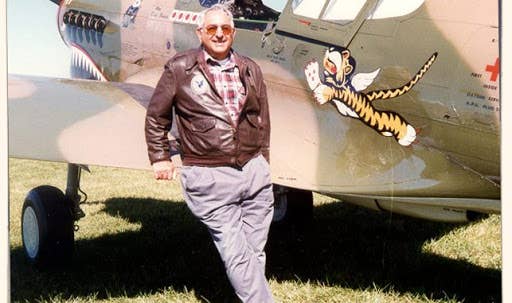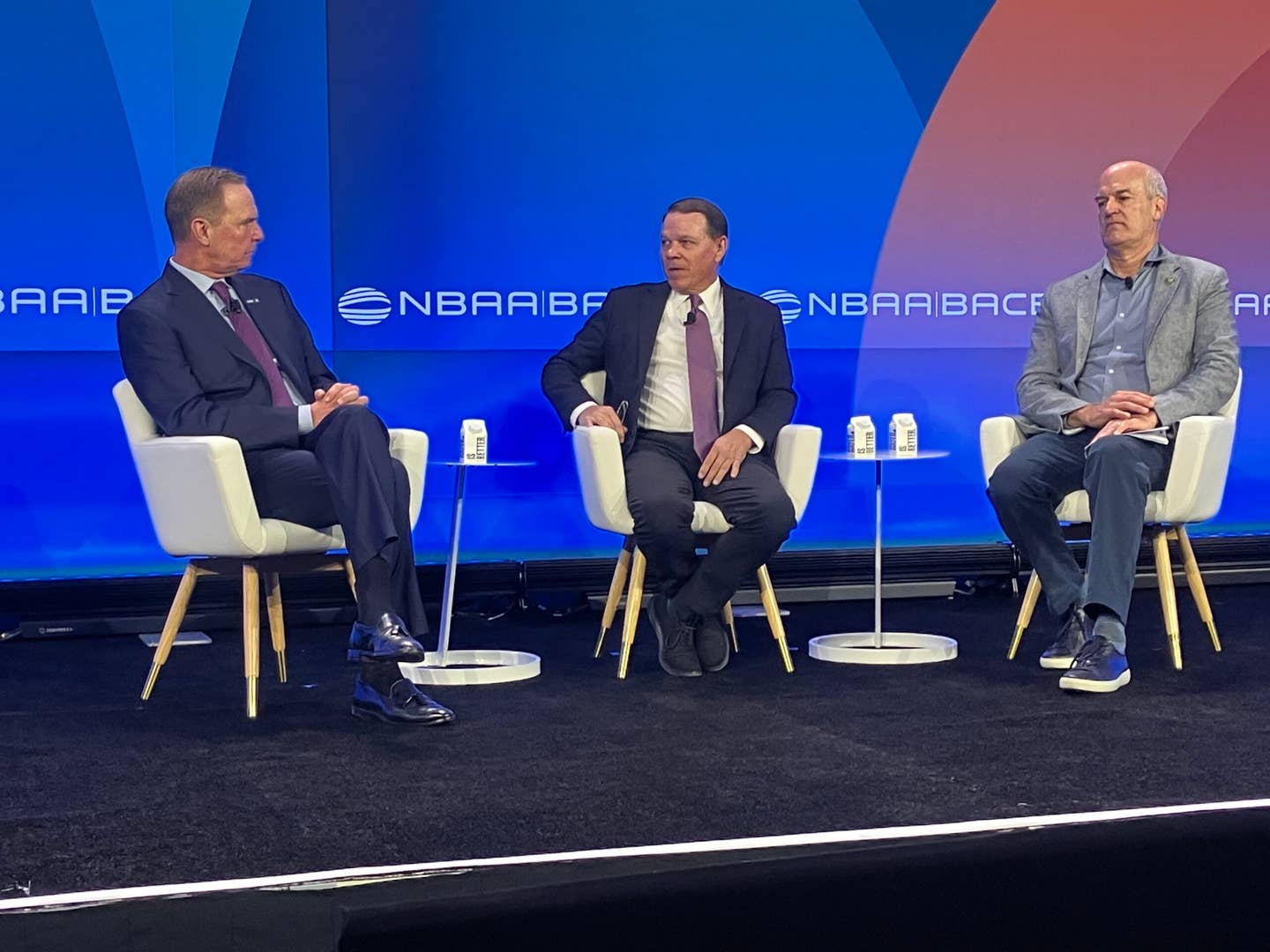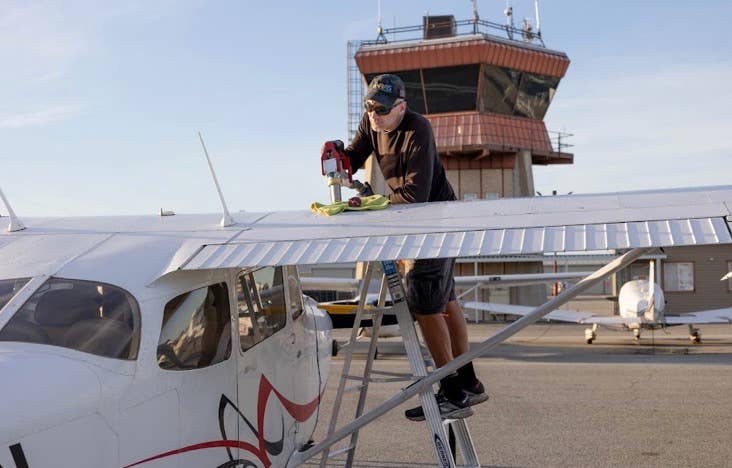Rudy And The J-3 TP Massacre
Aviation has its share of larger-than-life characters. But with Rudy Frasca’s passing, it has one less now.

Credit: Warbird News
As a writer, I receive a slug of calls, often telling me I’m full of beans. I usually agree and ask how the caller got my number. Most calls are friendly, and 30-ish years ago I received one from Rudy Frasca, the very real simulator guy.
I didn’t know Rudy, but he’d just read my first novel, Bootleg Skies, and called to give his review—mostly favorable—and invited me to visit him at his private Frasca Field (C16), Urbana, Illinois, home of Frasca International, the renowned flight simulator company. A year later I made the trip from central Iowa in my Aeronca Champ, which despite a tailwind, proved marginally faster than riding a Vespa.
In a time before Google Everything In Life™, I couldn’t get a complete image of Rudy, a larger-than-most-of-us aviation great. “I’ll watch for you,” he said over the phone and hung up to go invent something beyond my comprehension. His airfield had a paved runway long enough to handle his warbirds plus a grass strip, capable of supporting my Champ’s weight. After landing, I taxied to the fuel pumps where a Frasca employee met me. “Can you tell, Rudy I’m here?” I asked, and the guy answered, “Oh, trust me, he knows.”
As though on cue, a big-ass sedan wheeled around the hangar and stopped beside my Champ and out slid Rudy Frasca, truly larger than metaphor. “Beautiful,” he said, referring not to my landing but to the Aeronca two-seater. He then opened the door and slipped inside as though donning an old fight jacket. Skipping formalities, such as introducing himself, he asked, “Climb and land at 60?” I nodded, yes, and Rudy—smiling as though Santa had set the airplane under his tree—pointed toward the prop, indicating I should spin it, and asked, “Does she need any prime?”
“No,” I answered and stared at this stranger about to steal my airplane.
Rudy paused—something I learned he rarely did—and pointed toward the massive hangar behind me. “If I crash, take anything from the museum. Switch ON!” When I snapped the propeller blade through, the 65-HP engine fired with the clack of an oily pocket watch. Stepping aside, I watched Rudy taxi Quinta, my Champ, toward his grass runway, checking mags enroute before launching.
It’s unnerving to watch your own airplane fly away, especially with a total stranger at the controls. I turned to the ramp guy, who shrugged a That’s Rudy and pointed toward the hangar where my insurance policy awaited. “Take anything from the hangar,” Rudy had said, and I walked through a museum packed with rare birds—including a Spitfire under restoration and an airworthy Curtis P-40. I’ve long harbored unrequited lust for P-40s and shamelessly thought, “Hope he crashes.” He didn’t.
Rudy landed my Champ, taxied toward the ramp at Rudy speed, killing the engine, so the prop had barely stopped before he was out of the airplane and calling to his ramp guy, “Get the Cub!” Like: “Send for my steed and claymore! Alas, evil roams the sky, and we must climb to meet it!” He motioned me to follow, which as a guest in the Duchy of Rudyland, I did. “How many can you carry?” he asked as he handed me roll after roll of toilet paper. He wasn’t expecting an answer but did ask, “Ever flown a Cub?” I had … but not a lot. And never alone. Still ….
Historical perspective: I realize TP is a vital commodity in today’s wartime economy, but 30 years ago, it was for ribbon cutting in small airplanes. I was no novice. My Champ had an aluminum TP bomb rack attached to the floorboards forward of the front seat, where Rudy now sat, taxiing out. I followed in his J-3 Cub. A half-dozen rolls of TP on my lap and the floorboards around me.
The mission: To climb in formation—Wing Commander Rudy leading, of course. Once above the enemy cornfield, with the setting sun at our backs, we’d slow to attack mode, then arm the TP by unthreading the first 18 inches of leader. Over the target, we broke formation, and Rudy loosed a roll through the window. The roll plunged earthward, unwinding a two-ply tail behind it. Rudy cut power and dove in a steep spiral that would make a new DPE plotz. The objective is to aim a wing toward the streaming TP and slice off a segment, then reverse the spiral and make the next cut, repeating the exercise until the threat of TP to polite society is shredded or you hit the ground. Preferably the former. Well-armed, we repeated these attacks until out of ammo.
Debriefing that evening over dinner with his wife, Lucille, Rudy barely contained the enthusiasm he felt for, not just TP and its aviation potential, but family as well, including a glimpse into the grief they still harbored for their son, Joe, who had died after bailing out of an airplane in September, 1991.
Over the following years I would run into Rudy at Oshkosh (EAA) or Blakesburg (Antique Airfield) where he was always a celebrity and always a gentleman. When his Spitfire’s restoration was complete, he invited me back to Frasca Field for the unveiling. After he flew it for the first time, he called me simply to share what a spectacular experience he’d had flying one of the rarest of machines and added how, although alone in the cockpit, he’d felt Joe’s presence.
More years passed, and I lost contact with Rudy, so when I read that he’d died on May 11, 2020, at age 89, I thought … not of loss but, instead, what I’d gained by answering the phone that day back when. I should close with an obligatory RIP, but I doubt Rudy Frasca will ever rest; just too much energy and so many stars yet to explore.






